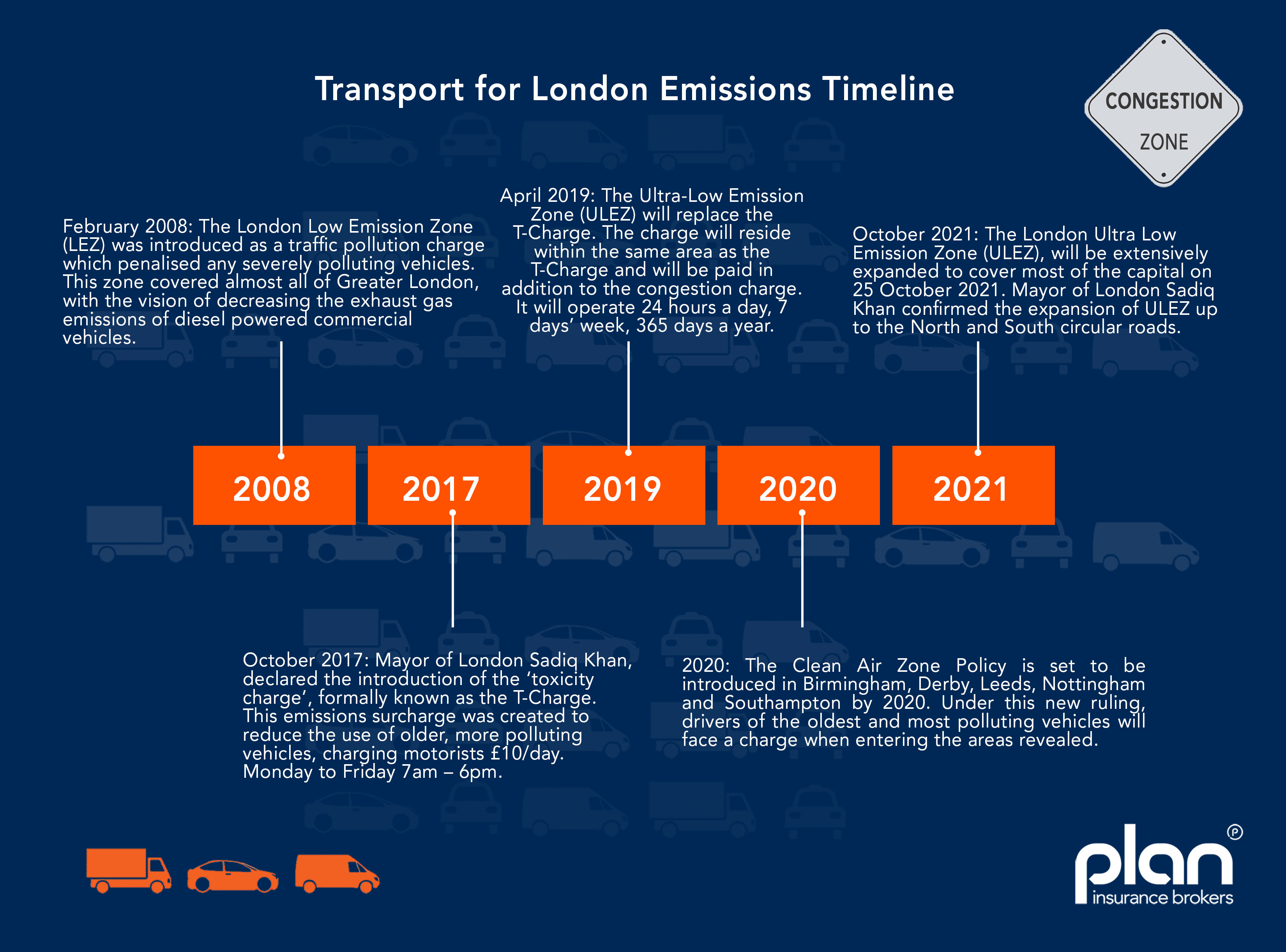If Londoners are familiar with the concept, drivers from other major cities haven’t yet experienced the constraints of low emission zones. Under the new proposals, they may soon face a charge when entering the CAZ in Leeds, Derby, Nottingham, Southampton and Birmingham. This could have a major impact for small businesses, and may not stop with these main cities as a number of local authorities are looking to implement similar restrictions.
How will CAZ impact your business?
The Clean Air Zone Policy is anticipated to come into action in Birmingham, Derby, Leeds, Nottingham and Southampton by 2020. Another 23 councils are looking into implementation shortly thereafter. Buses, commercial vehicles, coaches, and HGVs could potentially face a sobering price of up to £100 when travelling within those regulated areas.
Worryingly, recent research has revealed that many small and medium-sized businesses (SMEs) are completely unaware of this new policy, according to the British Vehicle Rental and Leasing Association (BVRLA).
Furthermore, 40% are completely oblivious to the particulars of the new rules and what the cost implications will be.
Gerry Keaney, BVRLA Chief Executive, said:
“Unless more is done to publicise the impact of these various Clean Air Zones and mitigate their impact, hundreds of thousands of businesses across the country will be hit with a new regional road transport tax that will bring additional cost and confusion at a time when firms are already dealing with Brexit-related economic uncertainty.
“We are particularly concerned about truck operators, who are more likely to be impacted by these zones, face the biggest charges and will struggle to find and afford CAZ-compliant vehicles.”
“Our members have spent the last ten years helping businesses to meet the requirements of the London Low Emission Zone and they understand the costs and operational challenges that businesses will face with the introduction of new Clean Air Zones across the UK”.
Furthermore, the BVRLA has also requested that the government put in place a strategy encouraging business owners to update their ageing fleets and promote more sustainable means of transportation.
Their suggestions include:
1. Only use CAZ’s where necessary and minimise their size where possible.
2. Ensure that local authorities adhere to common clean air zone standards in terms of hours of operation, signage, communications and any exemptions. As many businesses operate within multiple cities and regions on a daily basis it is vital that a standardised approach is developed to avoid confusion and improve the ease of compliance for drivers.
3. Introduce ‘phased charging’ for trucks so that the most polluting vehicles pay a higher fee to enter the CAZ. As currently envisaged, all trucks other than those meeting the very latest Euro VI emissions standard will pay the same fee. Introducing a graduated charge would encourage operators that cannot afford to buy a brand-new fleet to buy newer, cleaner used vehicles.
4. Committing to large scale trials of Mobility Credits. Under this scheme, drivers of older more polluting cars are offered credit if they scrap their polluting car. This credit can then be used across public transport and other modes such as car hire and car share all brought together under an app.
How much will you be expected to pay?
As one of the chosen cities, Birmingham City Council has stayed ahead of the curve in managing this transition, and have since revealed their proposed charges for polluting vehicles travelling throughout Birmingham City Centre. This can be found in the table below.
| Vehicle Type | Proposed Charge for non-compliant vehicles |
| Buses and Coaches | £50 – £100 |
| Lorries / HGVs | £50 – £100 |
| Taxis and private hire cars | £6 – £12.50 |
| Private cars | £6 – £10 |
London: from T Charge to ULEZ
The T-Charge, currently in operation in London, charges drivers £10 a day (from 7am to 6pm) on Monday to Friday. This will be replaced by the Ultra Low Emission Zone (ULEZ) from April 2019, which will be in force 24/7. What’s more, London Mayor Sadiq Khan has announced plans to extend the zone by October 2021 to an area 18-times larger than the original proposal.
A breakdown and understanding of ULEZ has been previously published on our blog, and details of the most recent changes to the congestion charge zone in the capital are outlined in our latest blog: Congestion Charge – TfL’s Proposals and their Impact on the industry.
Transport For London Emissions Timeline
Below is a timeline of the measures introduced in the capital in an attempt to control the air pollution over the last decade:
Air quality in city centres is a very important matter, one that affects the livelihoods of all those who live and work within these zones. Enforcing penalties for higher emissions vehicles should help reduce pollution and alleviate congestion, but this will undoubtedly be a challenge for professional drivers and fleet managers. Smaller businesses, in particular, may struggle to upgrade their fleets and could face prohibitive penalties.
Sources:
https://assets.publishing.service.gov.uk/government/uploads/system/uploads/attachment_data/file/612592/clean-air-zone-framework.pdf

